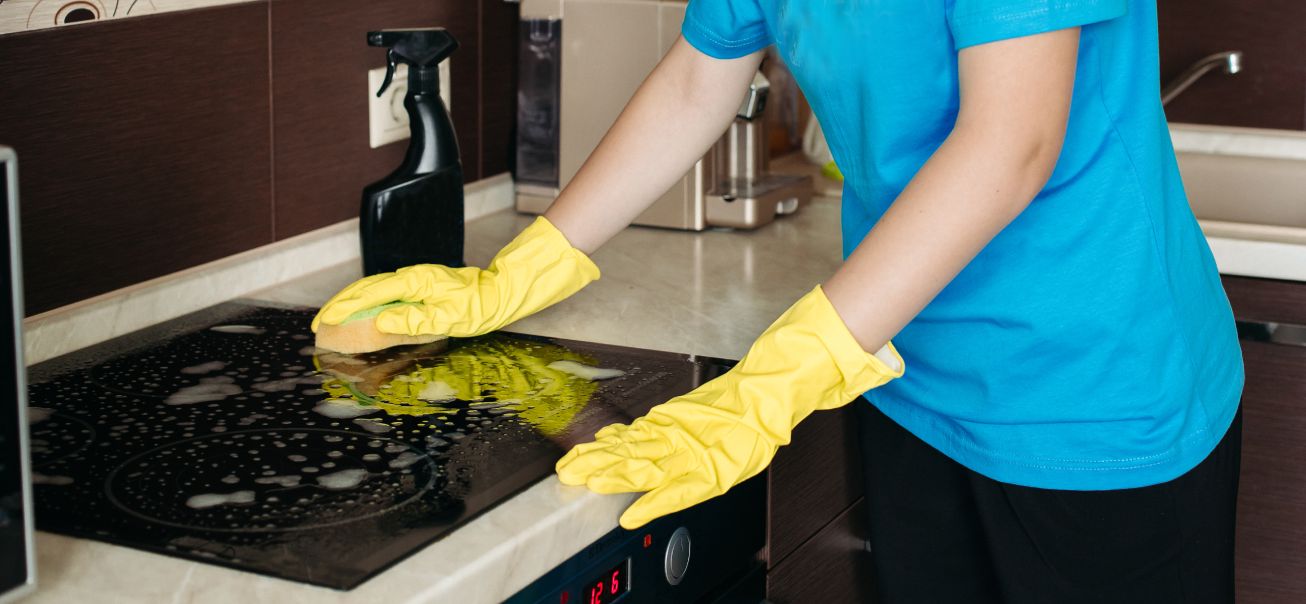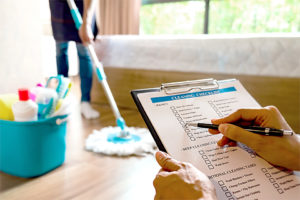
How To Clean Glass Top Stove
Glass-top stoves can add a sleek, minimalist look to any kitchen. They also come with the major benefit of not having to clean or replace drip pans or burner grates. But if you have a one of these stoves, you’ve likely noticed that even the smallest spill or splatter shows up and can seem much more noticeable.
Learn how to clean your glass-top stove without scratching it so that you can keep your kitchen looking its best.
PREP YOUR STOVE
Dinner was served, the table’s been cleared and the dishes are done. By this time, it’d surely be tempting to take a pass on cleaning the glass-top stove, but in the long run it’s much easier to spend an extra minute or two on it. Before you dive into cleaning it you must make sure the range is completely cooled. This is done in part to avoid burning your hand as you clean the surface, but also because spraying or applying any cleaning product when the stove-top is hot can burn the solvent right onto the glass, making the task at hand even more challenging. Fortunately, most glass-top stoves have a heat indicator light, which automatically shuts off once safe levels are achieved, so you don’t risk personal injury when checking to see if it’s safe to clean.
If your stove-top is pretty clean already it’s easy to maintain this sparkling appearance. In fact, it’s a great idea to get into the daily habit of spraying the surface with a spray bottle filled with either distilled white vinegar or plain water. Then, use a microfiber cloth to gently wipe any liquid and residue away. Use a dry microfiber cloth to buff any streaks from the surface to reveal a crystal-clear glass-top stove!
Need help keeping your home clean and neat? Our maid service team can help! Contact us today!
USE THE RIGHT TOOLS
Try to avoid pots and pans made from glass, stoneware, ceramic or cast iron, which can scratch the surface of a glass-top stove. Even aluminum foil can mar the glass! Scouring pads and scrub brushes are also major no-nos. Instead, use microfiber cloths and sponges to wipe up spills or scrub as needed.
CHECK YOUR PANTRY
You might be surprised to know that the answer to glass-top cleaning dilemmas is probably tucked snugly away in your kitchen pantry. Household staples like baking soda, white distilled vinegar or lemon juice work wonders for cleaning stubborn food stains from that sleek surface, provided you follow a few easy steps.
Baking soda and lemon are a particularly powerful pair, since baking soda is naturally antibacterial, while lemons are adept at cutting through grease. As always, wait until the glass top has completely cooled. Then, carefully pour/sprinkle baking soda across the glass-top surface. Using a slice of lemon (or you can drizzle bottled lemon juice), rub the entire surface, unless the mess is confined to one area. Once finished, wipe it down with a clean, damp cloth or sponge. The burned food mess should be totally gone. Buff with another dry cloth for good measure.
Dishwashing soap (the kind you use in the sink, not the dishwasher) is also great for cleaning stovetops. First, mix up some plain, hot tap water with a few drops of dishwashing soap. Soak a few soft cleaning cloths or old rags in the solution. Next, sprinkle the glass-top with baking soda and position the wet towels so that they are covering the stove surface. Keep them there for between 15 and 30 minutes, then remove the towels and re-soak them in the soap/water mixture and clean the surface by moving the towels in circular motions. Finally, use a clean, soft sponge to remove any remaining bits of mess.
USE A RAZOR OR SCRAPER
One hotly debated topic about keeping glass-top stoves in good shape is whether to use a razor or sharp scraper to assist in removing tough, grungy food stains. If you choose to go this route, appliance manufacturers recommend purchasing a special scraper, which comes in a kit with a stove-top cleaner and soft cleaning pads.
As always, once the stovetop is cooled down use a damp cloth or paper towel to remove any excess crumbs or other mess. Next, add a liberal amount of the liquid cleaner that came with the scraper (or buy some separately) to the area affected, and use the scraper to lift burnt-on debris. Holding the razor blade at an angle, use some muscle to scrape off any burned-on foodstuffs. Do not use the corner of the scraper or razor blade, as it can scratch the glass top. Although it’s tempting for extreme messes to call the whole thing off, it’s actually very important to the overall function of your stovetop that the mess be completely eradicated.




